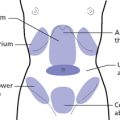 THROAT AND NECK
THROAT AND NECK
INTRODUCTION
Chinese medicine talks about the ‘throat’ in general without distinguishing the pharynx (related to both respiratory and digestive systems) from the larynx (pertaining to the respiratory system). There are, however, signs that the ancient Chinese doctors were aware of such a differentiation. For example, even as early as 100BC, the ‘Spiritual Axis’ said in Chapter 69: ‘The throat is the passage for food and drink; the throat is also where Qi goes up and down’.1 It is interesting that the Chinese text uses two different terms in this sentence: Yan-hou for the passage of food and Hou-long for the passage of Qi; both are translated as ‘throat’ in modern texts.
WHY WE ASK
I usually ask about neck symptoms to confirm the presence of a Liver pattern such as Liver-Qi stagnation or Liver-Yang rising, which, barring invasion of external Cold, comprise the most common causes of chronic neck ache.
CHANNELS INFLUENCING THE THROAT AND NECK
The throat and the front of the neck form an area in which practically all channels converge (see Fig 10.1 on p. 109). With the single exception of the Bladder channel, 11 of the 12 channels course either through the front or the side of the throat. Of the eight Extraordinary Vessels, six go through the centre or the side of the throat; the exceptions are the Governing Vessel and the Girdle Vessel. Thus, being influenced by so many channels and therefore Internal Organs, the throat reflects clearly conditions of Yin–Yang, Heat–Cold and Deficiency–Excess and is an important diagnostic area. The throat is influenced particularly by the Lungs, Stomach, Large Intestine, Liver, Kidneys and Directing Vessel channels.
THROAT
Sore throat
Symptoms and Signs, Chapter 59
Sore throat of internal origin
In children, external Wind-Heat has a stronger tendency than Wind-Cold to cause interior Heat. If not cleared properly after the initial stages, it is very likely to give rise to residual pathogenic factors. When a child presents with a recurrent, chronic sore throat, the two most common causes are either residual Heat in the Lung channel following an invasion of Wind-Heat or an accumulation of Heat in the Stomach and Large Intestine channels due to retention of food. In the case of residual Heat in the Lung channel, the child will present with a history of repeated invasion of Wind-Heat, which has usually been treated with antibiotics; other manifestations may include a cough, thirst, a feeling of heat, red cheeks and disturbed sleep. In the case of sore throat from accumulation of Heat in the Stomach and Large Intestine channels, there will be no history of repeated invasions of Wind-Heat, but rather one of successive digestive upsets such as vomiting and regurgitation of food; other manifestations may include abdominal pain, constipation, epigastric pain and disturbed sleep.
Box 36.1 summarizes the patterns underlying sore throats.
Hoarse voice
Hearing, Chapter 53; Symptoms and Signs, Chapter 59.
In chronic cases, by far the most common cause of a hoarse voice is a deficiency of Yin of both Lungs and Kidneys. In such cases, a hoarse voice is accompanied by a dry throat at night, an itchy throat, weak voice, dizziness, tinnitus, night sweating, a tongue without coating and a Floating-Empty pulse. This pattern is more common in the elderly.
Box 36.3 summarizes the patterns underlying a hoarse voice.
Feeling of obstruction in the throat
Symptoms and Signs, Chapter 59
Box 36.4 summarizes the patterns underlying a feeling of obstruction in the throat.
Swollen and red tonsils
Observation, Chapter 10; Symptoms and signs, Chapter 59.
Chronic conditions
In chronic conditions, redness and swelling of the tonsils indicates either Heat (which may be Full or Empty) or Toxic Heat. These may affect the Stomach or Large Intestine channels. In children, chronic tonsillitis is nearly always related to residual Heat or Toxic Heat (following repeated invasions of Wind-Heat, especially if treated with antibiotics). In adults, chronic tonsillitis is often due to Empty-Heat in the Lung or Stomach channel, or both.
Case history 36.1 illustrates a pattern underlying chronic tonsillitis.
Box 36.5 summarizes patterns underlying swollen and red tonsils.
NECK
Goitre
Observation, Chapter 10; Symptoms and Signs, Chapter 59.
Goitre is always by itself a sign of Phlegm. Very frequently, the pathology of Phlegm is combined with Qi stagnation in the throat; this is not always related to the Liver but may be related to the Lungs and Stomach too. In such cases, it is accompanied by irritability, depression, and variation in the goitre size according to mood. In chronic cases, there is always an underlying deficiency of Qi or Yin, or both, which may cause the goitre to go up and down.
Box 36.6 summarizes the patterns underlying goitre.

 ). People’s Health Publishing House: Beijing, 1981:125 First published c. 100
). People’s Health Publishing House: Beijing, 1981:125 First published c. 100

